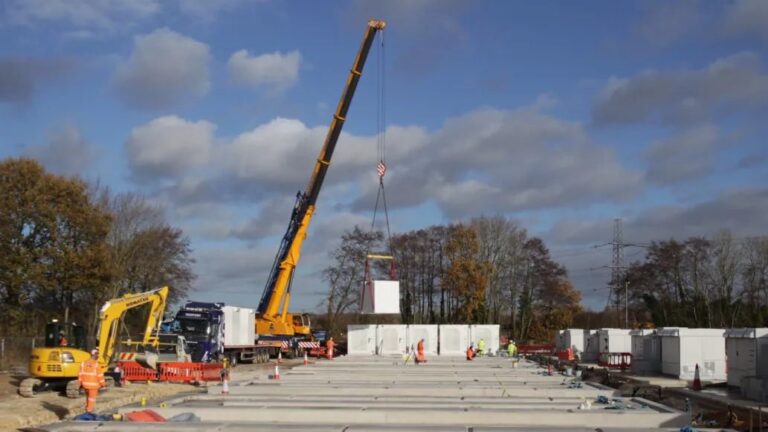Statkraft has reached a milestone in the construction of a 200MW battery energy storage system (BESS) with a two-hour capacity.
A total of 620 battery units have arrived at Thornton Greener Grid Park, located in West Yorkshire. The site is expected to be operational in late 2025 and will store energy generated at the nearby (but separate) 49.9 MW Soay Solar Farm project, also being developed by Statkraft.
Statkraft’s BESS projects are intended for short-term storage and typically last two hours. These systems can provide temporary storage for same-day deployment or quickly deliver large amounts of power to the grid to maintain network stability. The BESS and the solar power plant will be connected to the Thornton substation.
Kevin O’Donovan, Managing Director of Statkraft UK, said: “We are on an exciting journey, with almost 20 projects waiting to be built across a range of technologies, as we continue to invest significantly in the UK’s renewable energy infrastructure, which will help lower electricity bills for consumers and businesses and reduce carbon emissions for everyone.”
Statkraft has a UK investment pipeline of £4 billion, including other Greener Grid Parks in the UK. These include one in Moray, Scotland, with two synchronous Rotating Stabilizer machines, and a site in Swansea which was granted planning permission in 2021 and will include an energy management system building and 12 containerized battery storage units.
The Scottish Greener Grid Park intervened during a recent interconnection trip: when the Irish grid frequency dropped to almost 49.7 Hz, the 26 MW Kelwin Battery project in County Kerry, Ireland – owned by Statkraft – began exporting power within seconds , while the Scottish Greener Grid Park Grid Park began importing additional power.
Energy consultancy Cornwall Insight recently confirmed that short- to medium-term battery storage capacity in the Irish Internal Electricity Market (SEM) will increase five-fold by 2030. The SEM Benchmark Power Curve sees “significant growth in battery storage,” projecting to increase in the short to medium term. The long-term storage capacity of lithium-ion batteries, with a duration of up to 4 hours, will reach 13.5 GWh in 2030, compared to 2.7 GWh in 2025.
Statkraft is currently developing Ireland’s first 4-hour grid-scale BESS in County Offaly, inland Ireland. The 20 MW BESS will be co-located with the company’s 55.8 MW Cushaling wind farm, which is also currently under construction.
In an editorial that originally appeared in Vol.39 of PV Tech powerStatkraft’s Rory Griffin wrote about the challenges and opportunities encountered during the development of the project, explaining that Statkraft sees significant potential in co-location/hybrid assets under the same grid connection and is pushing for policy changes in this area to maximize the system benefits maximize.


